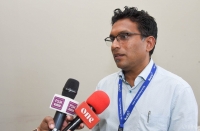As a low lying country and one of the most vulnerable countries to climate change, we need to be a leader in promoting sustainability in the aviation sector. SAF is already being used in Europe in the GA sector, which contributes to a lower carbon footprint. We can have state-offer grants or subsidies to airlines who take initiative for SAF. Apart from that, airlines can seek various newer models of aircraft which are more fuel efficient. Apart from using SAF, there are various ways to offset the carbon footprints from the current system. Studies show digitalization of fueling in aviation saves time and allows pilots to make small adjustments which saves fuel.
Additionally, we need to opt to maximize the use of electric GSE’s in the airports; especially the smaller ones which have lower traffic and implement a system to utilize ways to capture renewable energy to power the airports. Similar to Cochin airport; one of the first airports to be powered by solar energy.



